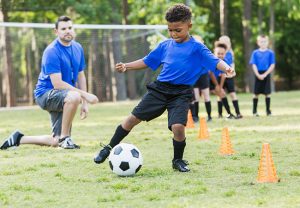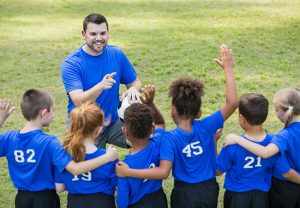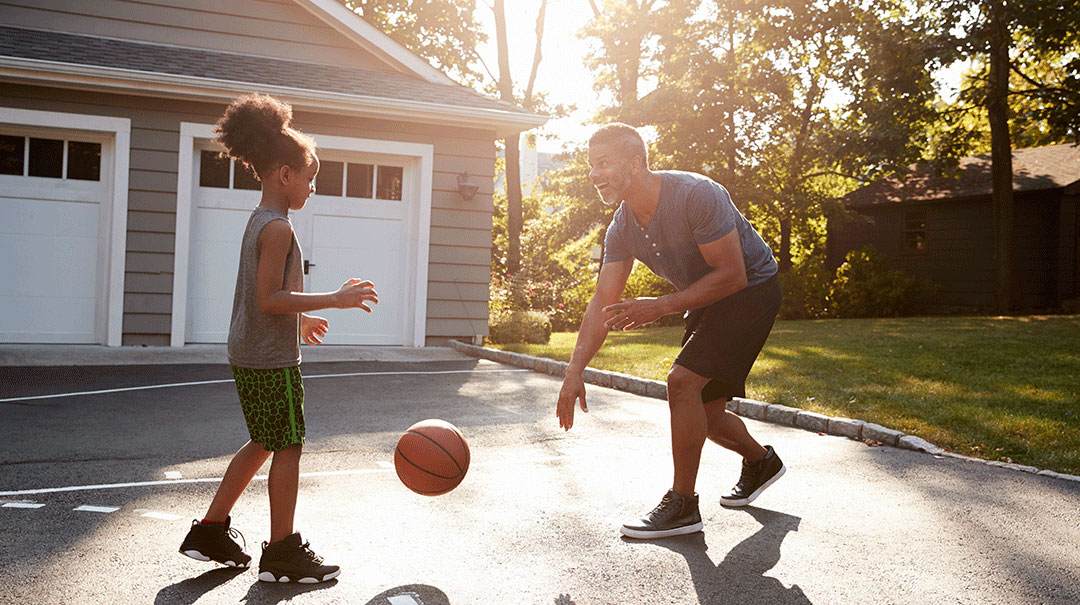Updated March 15, 2020
We all know being physically active is one of the best steps we can take for our health. Did you know being physically active from an early age promotes better health and activity through adulthood?
The Centers for Disease Control and Prevention provides physical activity recommendations for children and adolescents:
| Pre-school aged children
(Three to five years) |
- Aim for at least three hours a day of activity of all intensities: light, moderate, and vigorous.
- To strengthen bones, young children should do activities that involve jumping, skipping, hopping, and tumbling.
- Young children should be encouraged to move and engage in play and structured activities throughout the day.
|
| Children and adolescents
(Six to 17 years) |
- Aim for at least 60 minutes of moderate to vigorous activity each day.
- It is important for adolescents to perform aerobic, muscle-strengthening, and bone-strengthening activities several times a week.
- Adolescents should be encouraged to participate in physical activities that are appropriate for their age, enjoyable, and offer variety.
|
Ideally, physical activity begins in early childhood and continues as children grow and develop into adulthood, but it’s never too late to start becoming more active!
Why it’s important for kids to be physically active.
Healthy and active kids tend to be healthy, active adults. The health benefits of being physically active in childhood and adolescence include lower risk of obesity and chronic diseases, as well as better sleep habits and success in school.

- Success in school and work: Physical activity promotes normal growth and development and improves sleep, which translates to better attention in school, better test scores, and a higher likelihood a child will attend college. In adulthood, these patterns translate to improved productivity at work with the likelihood of increased earnings when compared to sedentary counterparts.
- Maintaining a healthy weight: Active kids are more likely to maintain a healthy weight from childhood to adulthood, reducing the risk of obesity as compared to inactive children.
- Chronic disease prevention: Regular physical activity can positively impact seven of 10 of the most common chronic diseases, including heart disease, stroke, cancer, and diabetes. Healthy habits lead to lower health costs and an overall decrease in morbidity.
- More responsible adolescents: Kids who are active have been shown to participate less often in risk behaviors including smoking, drinking, and drug use.
How to encourage your kids to be physically active.
Children of active parents are twice as likely to be active themselves. Since not all kids are innately active creatures, some need more encouragement to get up and get moving.
A good way to increase children’s physical activity is to find creative ways to get moving that work for your family and lifestyle. Physical activity does not have to be complicated or costly to be effective. Try one of these ideas:
- Take a family walk or bike ride
- Turn household chores into a movement game
- Have a dance party at home
- Go on a family hike
- Play a game of Simon Says with movement-based actions
If you notice your child is avoiding physical activities, it could be a sign that your child lacks the skills, self-assurance, or motivation to keep up with their peers.
Children build motor patterns by combining agility, coordination, balance, and body awareness. The more they practice, the more mature these motor skills become. However, without the foundational building blocks of balance, coordination, strength, endurance, and body awareness, kids are unable to create motor patterns for the more advanced skills. This commonly causes frustration and a lack of enjoyment during sports and physical activities. When physical activities stop being fun, it can be difficult to encourage participation, eventually leading children to drop out of sports altogether.
As a parent, the most important step is to create a positive environment that focuses on fun and building basic movement skills before concentrating on sport-specific skills. It’s a lot more fun to be physically active when kids have the skills, self-assurance, and motivation to keep up with their peers. Providing encouragement and praise rather than criticism can go a long way to instill a love for physical activity in children and adolescents.
How you can help your child develop and mature their motor skills.
 There are many things that can be done to help children who need extra support developing and maturing their motor skills. Active Kids is a physical therapy program at MedStar Health that promotes physical literacy for long-term health and wellness by helping children move better and more often and encouraging them to participate in health activities.
There are many things that can be done to help children who need extra support developing and maturing their motor skills. Active Kids is a physical therapy program at MedStar Health that promotes physical literacy for long-term health and wellness by helping children move better and more often and encouraging them to participate in health activities.
During the individualized sessions, children will work on basic exercises and movement patterns to improve coordination, balance, strength, and endurance. This translates to improved running, jumping, balance, and body awareness. The result is better motor skills, a higher likelihood of enjoying physical activity, and increased confidence and skills to better keep up with their peers.
We believe that inside every human body, lives a human being. It's how we treat people.
Learn More

